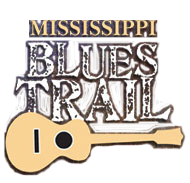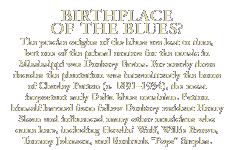
This Week's Featured Marker:
Dockery
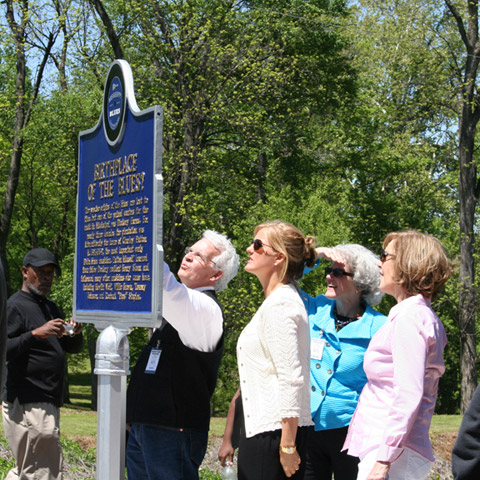 | 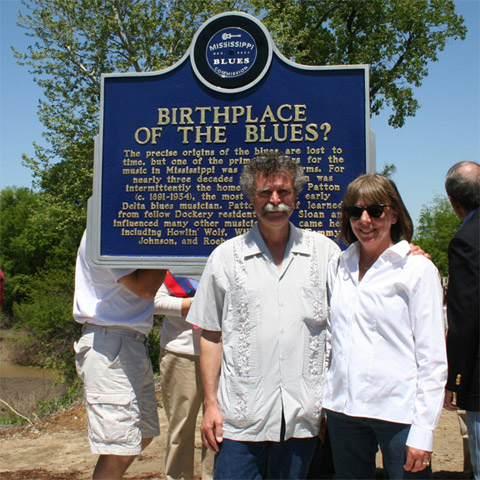 | 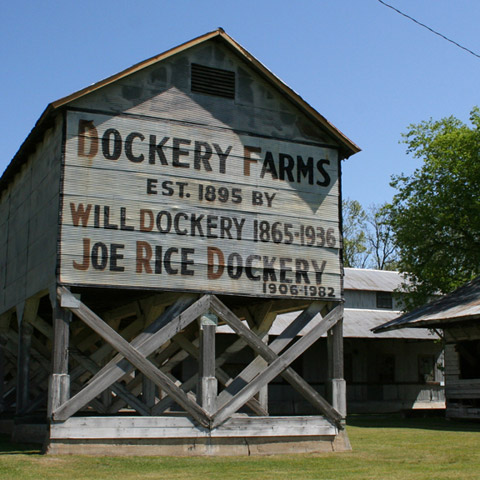 | 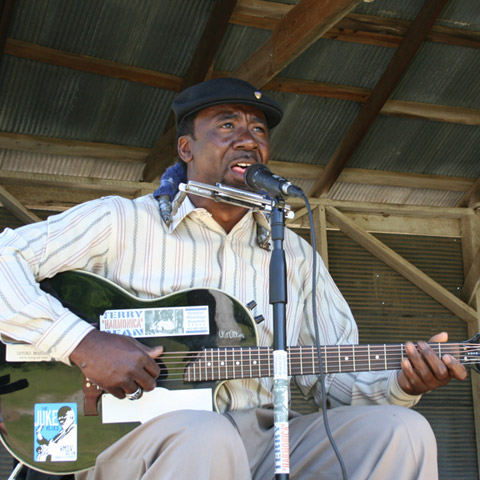 | 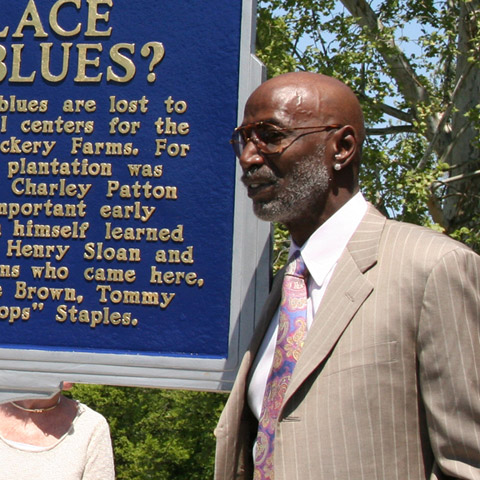 |
The 37th Mississippi Blues Trail marker was dedicated on April 19, 2008 on the grounds of Dockery Plantation, one of the most important sites in the history of Delta Blues. The question mark in the marker’s title refers to the fact that it is impossible to know exactly where blues first emerged; that said, most blues researchers agree that the musical exchanges that took place at Dockery were crucial to how the music took form, and particularly those surrounding Charley Patton.
The importance of Dockery to blues history was widely publicized via music critic and historian Robert Palmer’s book Deep Blues, a concise and entertaining study of how blues traveled from Mississippi to Chicago and beyond. Blues tourists have long stopped by the plantation to take pictures of the iconic sign on the seed house, and in recent years the Dockery Farms Foundation has worked to help restore the farm’s buildings and to help better interpret the plantation’s history to the public. In nearby Boyle there is a Blues Trail marker (#5) that acknowledges the role in blues of the Peavine railroad, which stopped at Dockery.
The marker unveiling took place in tandem with a visit to local schools including Delta State University by musicians representing the New Orleans-based Thelonious Monk Institute of Jazz. One of the musicians who attended the ceremony was drummer Thelonious “T.S.” Monk, Jr., who is the son of the legendary jazz pianist and the president of the organization’s board of trustees. In recent years the Institute’s tours of Mississippi have featured prominent jazz artists in addition to blues musicians Keb’ Mo’, Alvin Youngblood Hart, and Joe Louis Walker.
[ BACK TO TOP ]
